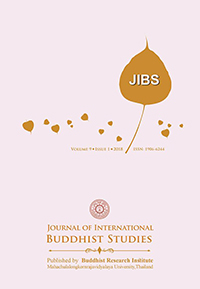Jumma Nation and Persecution in Bangladesh
Keywords:
Persecution, Jumma People (Ethnic Indigenous and Religious Minority Groups), Religion Political Violence, Con Licts, Military , Law Enforcement PersonnelAbstract
This paper deals with the religious and political persecutions that have become a serious concern to the religious and ethnic minority groups known as ‘Jumma’ people of CHT in Bangladesh namely, the Chakma, Marma, Thangchangya, Tripura, Rakhine, Chak, Bawm, Phangkhua, Khumi, Khyang, and Mro. The Jumma people practice Buddhism, Hinduism, Christianity, and a few others are animists while the majority mainstream population follow Islam, and Islam has been constitutionally adopted as the state religion. Wide-scale exclusion in association with religio-political persecution became forceful soon after the constitutional adoption of Islam as the state religion a few years after independence. Hence, from the perspective of religious studies, this study tends to focus on the plight of religious persecution linked to violence being meted out to the Jumma people. As per the information available, violence in CHT is multi-faceted and multiple in nature. Usually, the ongoing violence and conflicts occur as one-sided communal attacks inevitably leading to rioting, arson, plundering, killing, rape, land occupation, and finally interference by the army and law & order forces that resulted in arbitrary arrest, torture, fabricated cases, and putting in unbailable imprisonment.
References
Ahmed, Aftab. Ethnicity and Insurgency in the Chittagong Hill Tracts Region: A study of the Crisis of Political Integration in Bangladesh. Chittagong: The University of Chittagong Press, 2008.
Ashrafuzzaman, Md. The Tragedy of the Chittagong Hill Tracts in Bangladesh: Land Rights of Indigenous People. Lund, Sweden: The University of Lund Press, 2014.
Arens, Janneke . "Winning Hearts and Minds: Foreign Aid and Militarization in the Chittagong Hill Tracts," Economic and Political Weekly 29 (1997): 1811-1819.
Chakma, Sneha Kumar. My Life and Struggle for Peace. Rangamati Bangladesh: Shibli Offset Press, 2014.
Chakma, Bhumitra. "Structural Roots of Violence in the Chittagong Hill Tracts." Economic and Political Weekly 45 (2020): 19-21.
"The Post-colonial State and Minorities: Ethnocide in the Chittagong Hill Tracts, Bangladesh." Commonwealth & Comparative Politics 48 (2010): 2810-300.
Chowdhory, Nasreen. Refugees, Citizenship and Belonging in South Asia. New Delhi: The Springer Nature Singapore Pte Ltd Press, 2018.
Emran, Ali M. "Land right of Indigenous People of the Chittagong Hill Tracts in Bangladesh." The fourth World Journal 1 (2002): 63-79.
Gain, R. W. Timm Philip. Bangladesh State Human Rights 1991. Dhaka: Co-ordination Council for Human Rights Bangladesh Press, 1992.
Gray, Richard A. "Genocide in the Chittagong Hill Tracts of Bangladesh." Emerald Insight Reference Service Review 22 (1994): 59-79.
Hassan, Md. Zahid. Institutional Responsiveness to Indigenous Rights: The Case of Chittagong Hill Tracts Land Dispute Resolution Commission. Tromso, Norway: The University of Tromso Press, 2011.
International Work Group for Indigenous Affairs (IWGIA). Militarization in the Chittagong Hill Tracts, Bangladesh: The Slow Demise of the Region's Indigenous Peoples.Copenhagen: Organizing Committee CHT Campaign and Shimin Gaikou Centre Press. 2012.
Jr, Karl DeRouen and Uk Heo. Civil Wars of the World: Major Conflicts Since World War II. Santa Barbara. California: ABC-CLIO Oxford Press, 2007.
Juergensmeyer, Mark. Global Rebellion: Religious Challenges to the Secular State, from Christian Militias to Al Qaeda. Berkeley: The University of California Press, 2008.
Kamduk, Jumgam. Rise of Chakma Ethnic Consciousness in Arunachal Pradesh: An Instrumentalist Approach, IOSR Journal of Humanities and Social Science 5 (2016): 24-29.
Kapaeeng Foundation. Human Rights Report 2018 on Indigenous People in Bangladesh. Dhaka: Kapaeeng Foundation Press, 2019.
Mathur, Hari Mohan. Analysis of Chittagong Hill Tracts Confict in Bangladesh. New Delhi: Society for Policy Studies (SPS) Press, 2015.
Mohaiemen, Naeem. Between Ashes and Hope: the Chittagong Hill Tracts in the Blind Spot of Bangladesh Nationalism. Dhaka: All Rights Reserved Press, 2010.
Panday, Pranab Kumar, and Jamil Ishtiaq. "Conflict in the Chittagong Hill Tracts of Bangladesh: An Unimplemented Accord and Continued Violence." Asian Survey 49 (2009): 1052-1070.
Peters, John. E. et al. War and Escalation in South Asia. Santa Monica, CA: The RAND Corporation Press, 2006.
Riaz, Ali, and C. Christine Fair. Political Islam and Governance in Bangladesh. New York: Routledge Press, 2011.
PCJSS (Parbatya Chattagram Jana Samhiti Samiti). Longadu Communal Attack, Plungdering and Arson. Rangamati, Chittagong: PCJSS Press, 2017.
Roy, Raja Devasish. The Chittagong Hill Tracts Regulation, 1900. Dhaka: Association for Land Re form and Development (ALRD) Press, 2010.
Shakil, Md. Rajib Hasnat. "Systematic Persecution of Religious Minorities: Bangladesh Perspective." IOSR Journal of Humanities and Social Science 7 (2013): 9-17.
Siddiqi, Dina M. Human Rights in Bangladesh 2003. Dhaka: Ain O Salish Kendra (ASK) Press, 2004.
Singh, Deepak K. Stateless in South Asia; The Chakmas between Bangladesh and India. New Delhi: New India Foundation and SAGE Publications India Ltd Press, 2010.
Vial, Theodore. Modern Religion, Modern Race. New York: The University of Oxford Press, 2016.
Visweswaran, Kamala. Everyday Occupation: Experiencing Militarism in South Asia and the Middle East. Philadelphia: The University of Pennsylvania Press, 2013.
Zahid, Iqthyer Uddin Md. "Conflict Between Government and the Indigenous People of Chittagong Hill Tracts in Bangladesh." IOSR Journal of Humanities and Social Science 5 (2013): 97-102.







